![]()
![]()
![]()
Use LEFT and RIGHT arrow keys to navigate between flashcards;
Use UP and DOWN arrow keys to flip the card;
H to show hint;
A reads text to speech;
76 Cards in this Set
- Front
- Back
|
This is a Taenia pisiformis of Class Cestoda, Phylum Platyhelminthes - this is a tapeworm, which is a digestive parasite of animals.
Visible parts: HOOKS located on the ROSTELLUM and SUCKERS |
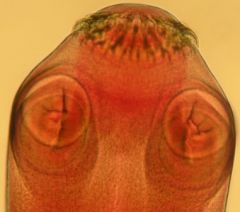
What is the slide, class, phylum and species, identify all present parts, etc?
|
|
|
This is a Taenia pisiformis of Class Cestoda, Phylum Platyhelminthes - this is a tapeworm, which is a digestive parasite of animals.
Visible parts left-right: EXCRETORY CANAL, EARLY OVARY, EARLY TESTES, IMMATURE VAGINA |
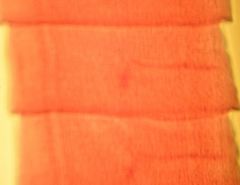
What is the slide, class, phylum and species, identify all present parts, etc?
|
|
|
This is a Taenia pisiformis of Class Cestoda, Phylum Platyhelminthes - this is a tapeworm, which is a digestive parasite of animals. Tapeworms lack digestive organs altogether and they lack sensory organs and a mouth, this is one of the repeated segments called, PROGLOTTIDS, these segments are continually produced by the SCOLEX (the head section) by ASEXUAL BUDDING
Visible Parts top-bottom: Uterus (top center), Excretory canal (right line), Testes (top l/r center circles), below the testes is the DUCTUS DEFERENS, to the left is the VAGINA, to the right is the CIRRUS, to the right leading to the outside is the GENITAL PORE (right entrance), lower left corner OVARY, below the ovary is the YOLK GLAND, egg leaves the ovary travel to the uterus through the thin OVIDUCTS, sperm enters the vagina through small round SEMINAL RECEPTACLE ** LARGER SEGMENTS ON THE POSTERIOR END ARE CALLED, GRAVID PROGLOTTIDS |
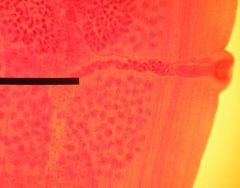
What is the slide, class, phylum and species, identify all present parts, etc?
|
|
|
This is a Taenia pisiformis of Class Cestoda, Phylum Platyhelminthes - this is a tapeworm, which is a digestive parasite of animals.
Visible parts left to right: genital pore, cirrus, excretory canal, ductus deferens, vagina, seminal receptacle, uterus, oviducts, testes, ovary, yolk gland, this is a proglottids or a gravid proglottids |
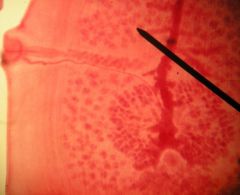
What is the slide, class, phylum and species, identify all present parts, etc?
|
|
|
Left Side:
Class Cestoda, Phylum Platyhelminthes, these are tapeworms. Characteristics: Parasitic, complex life cycle w/multiple host, suckers, hooks on scolex used for attachment to host; eggs are produced and shed w/in proglottids (each segment) Right side: Class Turbellaria, Phylum Platyhelminthes, these are planarians Characteristics: mostly free-living, carnivorous, aguatic forms; body covered by ciliated epidermis |
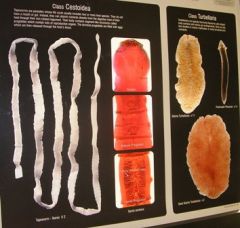
Be able to identify the two sides, stage, etc?
|
|
|
This is a Dugesia of Class Turbellaria, Phylum Platyhelminthes, which is a planarian. This is the posterior section.
Visible parts: two posterior rear TRUNKS, a section on the trunks is called DIVERTICULA of the GASTROVASCULAR CAVITY, which is lined by some EPITHELIAL CELLS called GASTRODERMAL CELLS from the gastrodermis, the body is filled w/PARENCHYMA TISSUE. |
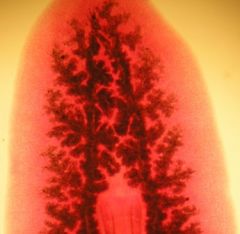
What is the slide, class, phylum and species, identify all present parts, etc?
|
|
|
This is a Dugesia of Class Turbellaria, Phylum Platyhelminthes, which is a planarian. This is the SINGLE ANTERIOR (FORWARD) TRUNK.
Visible parts: EYE (SPOTS), AURICLES (SIDE PARTS, WHICH ARE SUPPLIED W/CHEMICAL AND TOUCH RECEPTORS). NOT VISIBLE: the brain (GANGLIA), cell bodies recieve sensory input and pass them via NERVE CORDS. |
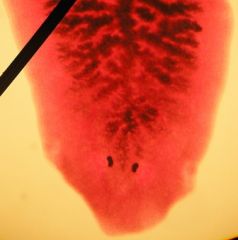
What is the slide, class, phylum and species, identify all present parts, etc?
|
|
|
What is the slide, class, phylum and species, identify all present parts, etc?
Visible parts bottom-top: bottom center, GASTROVASCULAR CAVITY; PHARYNX living inside the PHARYNGEAL CAVITY; |
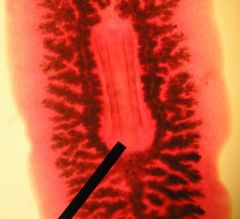
What is the slide, class, phylum and species, identify all present parts, etc?
|
|
|
This is a Dugesia of Class Turbellaria, Phylum Platyhelminthes, which is a planarian. This is the mid section.
Visible Parts: this is the Pharyngeal cavity, top center is the Pharynx, bottom is the Pharynx opening (mouth) |
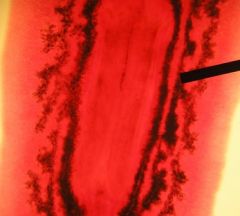
What is the slide, class, phylum and species, identify all present parts, etc?
|
|
|
This is a Planarian of Class Turbellaria, Phylum Platyhelminthes. Characteristics: Mostly free-living, carnivorous, aquatic forms; body covered by ciliated.
|

What is the slide, class, phylum, and organism, characteristics, etc?
|
|
|
This is a planarian transverse section, Class Turbellaria, Phylum Platyhelminthes
Characteristics: Mostly free-living, carnivorous, aquatic forms; body covered by ciliated epidermis Visible Parts, Outside in: Epidermis (skin), Cilia (hair-like extension from skin), outer ring TESTIS, rings 2nd to the center Large ring is GASTROVASCULAR CAVITY, TWO POSTERIOR REAR TRUNKS, center is the PHARYNGEAL CAVITY tissue inside the pharyngeal cavity and the diverticula cavities is GASTROMERIS, which is gastrodermal cells, the BODY TISSUE is FILLED MOSTLY W/PARENCHYMA TISSUE |

What is the slide, class, phylum, characteristics, body parts, etc?
|
|
|
This is a Planarian, Class Trubellaria, Phylum Platyhelminthes
Characteristics: Mostly Free-living, carnivorous, aquatic forms, body covered by ciliated epidermis Visible part: Tranverse section throught he posterior region, two posterior rear trunks, pharyngeal cavity in the middle, pharynx, gastrovasc cavity, diverticula, gastrodermis, parenchyma tissue fills most of the body, brain is two fused ganglia, two ventral longitudinal nerve cords are connected to numerous transverse nerve cords, excretory canals and their associated Flame cells which are also called protonephridia (prot=first, nephridia=excretory tubule), waste leaves the body through the excretory pores, these are generally MONOECIOUS, but tend to cross fertilize w/mates too |

What is the slide, class, phylum, characteristics, body parts, etc?
|
|
|
This is a FLUKE (SCHISTOSOMES), CLASS TREMATODA, PHYLUM PLATYHELMINTHES
CHARACTERISTICS: Parasitic w/wide range of invertebrate and vertebrate hosts; suckers for attachment to host. VISIBLE PARTS: MOUTH, ORAL SUCKERS, PHARYNX, ESOPHAGUS, CEREBRAL GANGLION, INTESTINE, GENITAL PORE, VENTRAL SUCKER Flukes epithelial tissue is called TEGUMENT, their HUMAN DEFINITIVE HOSTS they live in the liver and then into the feces, next into snails which SERVE AS INTERMEDIATE HOSTS, these eggs hatch w/in the snail and form a larva called MIRACIDIUM, eventually they become CERCARIA, which swim free into fish and then full circle back into humans, which can make its way into the liver and cause great damages. |

Identify the slide, class, Phylum, characteristics, visible parts, etc?
|
|
|
This is a FLUKE, CLASS TREMATODA, PHYLUM PLATYHELNITHES,
CHARACTERISTICS: Parasitic w/wide range of invertebrate and vertebrate hosts; suckers for attachment to host Visible parts: GENITAL PORE, VENTRAL SUCKER (RED CIRCLE), UTERUS (DARK COLOR), YOLK GLANDS |
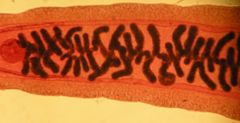
What is the slide, class, phylum, characteristics, body parts, etc?
|
|
|
This is a FLUKE, CLASS TREMATODA, PHYLUM PLATYHELNITHES,
CHARACTERISTICS: Parasitic w/wide range of invertebrate and vertebrate hosts; suckers for attachment to host Visible parts: OVARY, SEMINAL RECEPTACLE, TESTIS, DUCTUS (VAS) DERFERENS |
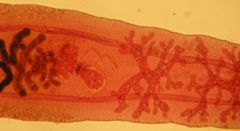
What is the slide, class, phylum, characteristics, body parts, etc?
|
|
|
This is a FLUKE, CLASS TREMATODA, PHYLUM PLATYHELNITHES,
CHARACTERISTICS: Parasitic w/wide range of invertebrate and vertebrate hosts; suckers for attachment to host Visible parts: SEMINAL RECEPTACLE, TESTIS, DUCTUS DEFERENS (OPEN AREA BETWEEN DARK TESTIS), EXCRETORY PORE (TAIL) |
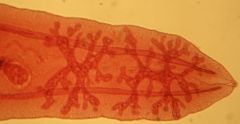
What is the slide, class, phylum, characteristics, body parts, etc?
|
|
|
This is a planarian anterior end, class turbellaria, phylum platyhelminthes,
Visible parts: Head, eyespots, auricle, length of body after head to tail; branched gastrovascular cavity, diverticulum of intestinal cavity, pharyngeal cavity, pharynx, opening of pharynx mouth Internal organs: outside in: epidermis, cilia epidermis hair, circular muscle, longitudinal muscle, nerve cord, gastrodermis, gastrodermal cells, parenchyma cells, intestinal cavity, pharyngeal cavity, etc... |
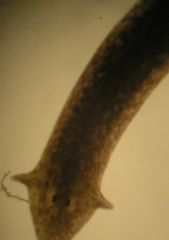
What is the slide, class, phylum, characteristics, body parts, etc?
|
|
|
This is a model of a Porglottids mature segment of a taenia pisiformis, Class Cestoda, Phylum Platyhelminthes,
|
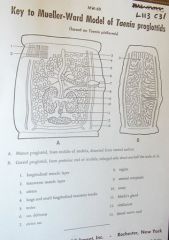
What is the slide, class, phylum, characteristics, body parts, etc?
|
|
|
This is a FLUKE, CLASS TREMATODA, PHYLUM PLATYHELMINTHES, WITH AVAILABLE PARTS ON A MODEL
|
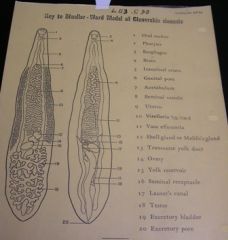
What is the slide, class, phylum, characteristics, body parts, etc?
|
|
|
This is a FLUKE, CLASS TREMATODA, PHYLUM PLATYHELMINTHES
CHARACTERISTICS: Parasitic w/wide range of invertebrate and vertebrate hosts; suckers for attachment to hosts |
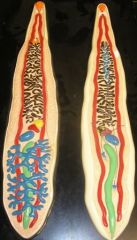
What is the slide, class, phylum, characteristics, body parts, etc?
|
|
|
This is a Planarian, CLASS TURBELLARIA, PHYLUM PLATYHELMINTHES
CHARACTERISTICS: Mostly free-living, carnivorous, aquatic forms; body covered by ciliated epidermis |

What is the slide, class, phylum, characteristics, body parts, etc?
|
|
|
This is a Planarian model, Class Turbellaria, Phylum Platyhelminthes
Characteristics: Mostly free-living, carnivorous, aquatic forms; body is covered by ciliated epidermis |
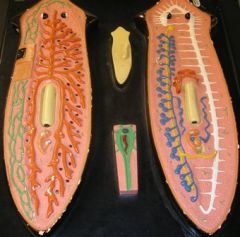
What is the slide, class, phylum, characteristics, body parts, etc?
|
|
|
This is a transverse section of Planarian, class turbellaria, phylum platyhelminthes
|
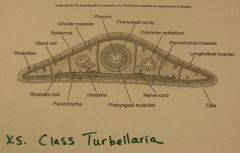
What is the slide, class, phylum, characteristics, body parts, etc?
|
|
|
know this organism, but NOT the life cycle...
|
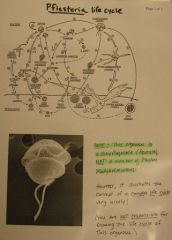
What is the slide, class, phylum, characteristics, body parts, etc?
|
|
|
know this specimen that is all...
|
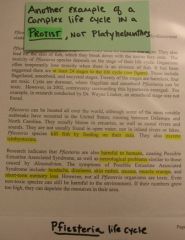
What is the slide, class, phylum, characteristics, body parts, etc?
|
|
|
This is a FLUKE, class trematoda, phylum platyhelnithes
Know the life cycle... |

What is the slide, class, phylum, characteristics, body parts, etc?
|
|
|
This is a FLUKE, Class Trematoda, phylum platyhelminthes
Know this life cycle... |
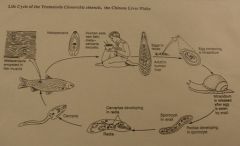
What is the slide, class, phylum, characteristics, body parts, etc?
|
|
|
can be used on the lab exams...
|
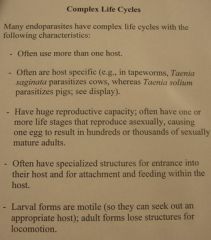
What this info...
|
|
|
This is a scolex of tapeworm, Taenia, class cestoda, phylum platyhelminthes
Rostellum w/hooks, suckers, beginning to the neck... |
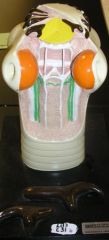
What is the slide, class, phylum, characteristics, body parts, etc?
|
|
|
This is a tapeworm Taneaia pisiformis, class cestoda, phylum platyhelminthes
Visible parts: Rostellum with hooks, scolex, suckers, neck, BUDDING ZONE, possibel uterus w/fertilized eggs |
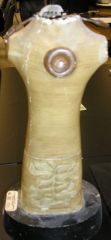
What is the slide, class, phylum, characteristics, body parts, etc?
|
|
|
This is a model of a tapeworm Scolex, etc, Class cestoda, phylum platyhelminthes:
Know the parts... |
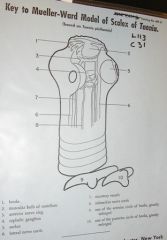
What is the slide, class, phylum, characteristics, body parts, etc?
|
|
|
This is a segment of a tapeworm, Taneaia pisiformis, immature proglottid
Know the parts... |
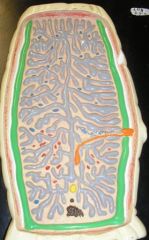
What is the slide, class, phylum, characteristics, body parts, etc?
|
|
|
This is a mature Proglottid of a Taneaia pisiformis, tapeworm, Class Cestoda, Phylum Platyhelminthes
Know the parts... |
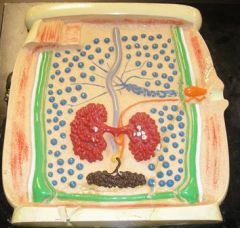
What is the slide, class, phylum, characteristics, body parts, etc?
|
|
|
This is a Squid of Phylum Mollesca, includes clams, snails, and squids
Characteristics: Bilaterally symmetric w/a true coelom, containing a mantle, many have muscular foot and protective shell |
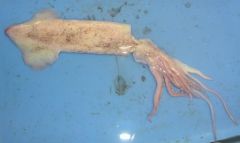
What is the slide, class, phylum, characteristics, body parts, etc?
|
|
|
This is a squid, Class Cephalopoda, includes squid and octopi, Phylum Mollusca
Characteristics: Marine; excellent swimmers, predatory, foot separated into tentacles which may contain suckers, well developed eyes Know the internal organs... |
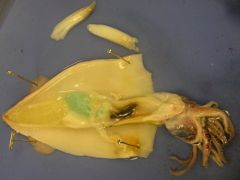
What is the slide, class, phylum, characteristics, body parts, etc?
|
|
|
Info needed to know...
|
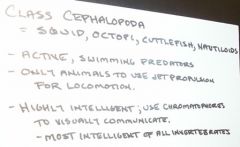
What is the slide, class, phylum, characteristics, body parts, etc?
|
|
|
Info needed to know...
|
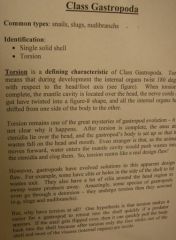
What is the slide, class, phylum, characteristics, body parts, etc?
|
|
|
THis is an abalone, Class Gastropda, Phylum Mollusca
Know this slide... |

What is the slide, class, phylum, characteristics, body parts, etc?
|
|
|
Know this info for exam...
|
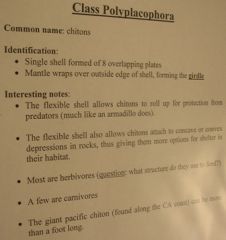
What is the slide, class, phylum, characteristics, body parts, etc?
|
|
|
know this info for exam...
|
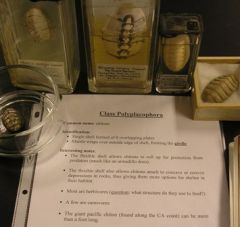
What is the slide, class, phylum, characteristics, body parts, etc?
|
|
|
know this info for exam...
|
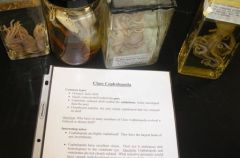
What is the slide, class, phylum, characteristics, body parts, etc?
|
|
|
know this for exam...
|
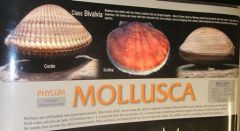
What is the slide, class, phylum, characteristics, body parts, etc?
|
|
|
know this for exam...
|

What is the slide, class, phylum, characteristics, body parts, etc?
|
|
|
know this for exam...
|

What is the slide, class, phylum, characteristics, body parts, etc?
|
|
|
know this fro exam
|
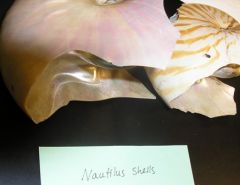
What is the slide, class, phylum, characteristics, body parts, etc?
|
|
|
know this for exam
|
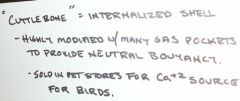
What is the slide, class, phylum, characteristics, body parts, etc?
|
|
|
know this completely for exam....
|
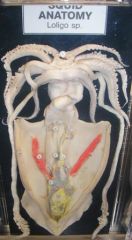
What is the slide, class, phylum, characteristics, body parts, etc?
|
|
|
know this for exam...
|
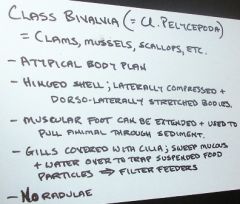
What is the slide, class, phylum, characteristics, body parts, etc?
|
|
|
know this for exam...
|
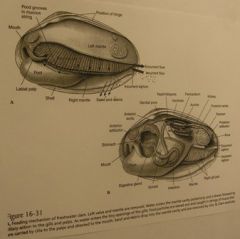
What is the slide, class, phylum, characteristics, body parts, etc?
|
|
|
know this for exam...
|
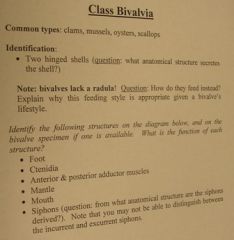
What is the slide, class, phylum, characteristics, body parts, etc?
|
|
|
know this for exam...
|

What is the slide, class, phylum, characteristics, body parts, etc?
|
|
|
know this for exam....
|
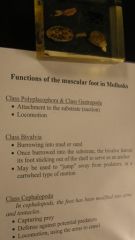
What is the slide, class, phylum, characteristics, body parts, etc?
|
|
|
know these for exam...
|
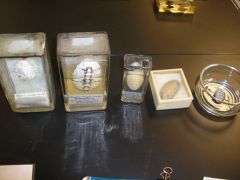
What is the slide, class, phylum, characteristics, body parts, etc?
|
|
|
know this for exam
|
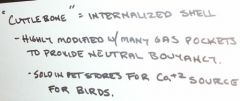
What is the slide, class, phylum, characteristics, body parts, etc?
|
|
|
This is an earthworm, Class Oligochaeta, Phylum Annelida
Characteristics: freshwater and burrowing terrestrial forms; small setae; poorly developed head Know the inside organs... |

What is the slide, class, phylum, characteristics, body parts, etc?
|
|
|
This is a sandworm, Neanthes, Class Polychaeta, Phylum Annelida, which includes tubeworms and sandworms
Characteristics: Mostly marine; segments w/parapodia Know the other organs... |
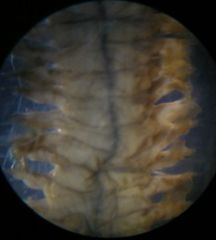
What is the slide, class, phylum, characteristics, body parts, etc?
|
|
|
This is an earthworm, Lumbricus, Class Oligochaeta, Phylum Annelida
Characteristics: Freshwater and burrowing terrestrial forms; small setae; poorly developed head Visible parts: Mouth, buccal cavity, brain (pair of small suprapharyngeal anglia), pharynx that is wrapped around by a circumharyngeal connectives that meet to for a harder identifable Subpharyngeal ganglia |
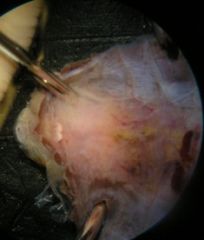
What is the slide, class, phylum, characteristics, body parts, etc?
|
|
|
This is an earthworm, Lumbricus, Class Oligochaeta, Phylum Annelida
Characteristics: Freshwater and burrowing terrestrial forms; small setae; poorly developed head Visible parts: the pharynx, radiating dialtor muscle, leads to the esophagus, 5 hearts, seminal vessicles (large white tissue), inside are testes, outside the seminal vessible are seminal receptacles |
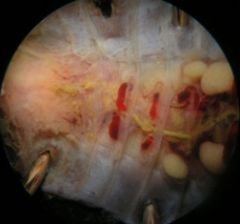
What is the slide, class, phylum, characteristics, body parts, etc?
|
|
|
This is an earthworm, Class Oligochaeta, Phylum Annelida
Characteristics: freshwater and burrowing terrestrial forms; small setae; poorly developed head Know the inside organs... hearts, calciferous glands, esophagus, testes located on the seminal vessicles, ovary, oviduct, dustus deferens, crop, gizzard, dorsal blood vessel... |

What is the slide, class, phylum, characteristics, body parts, etc?
|
|
|
This is an earthworm, Class Oligochaeta, Phylum Annelida
Characteristics: freshwater and burrowing terrestrial forms; small setae; poorly developed head Know the inside organs... seminal vesicles, crop, gizzard, intestine (yellow colored tissue (chlorogogue tissue), dorsal blood vessel, ends at the typhlosole, into the Ventral nerve cord, outer edge is the septom around segment 25 |
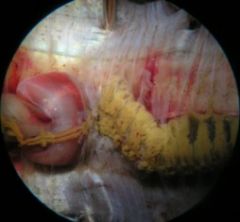
What is the slide, class, phylum, characteristics, body parts, etc?
|
|
|
This is a tubeworm, Class Polychaeta, Phylum Annelids
Characteristics: Mostly marin; segments w/paropodia |

What is the slide, class, phylum, characteristics, body parts, etc?
|
|
|
know this for exam...
|
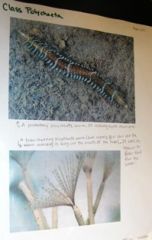
What is the slide, class, phylum, characteristics, body parts, etc?
|
|
|
know this info for exam...
|

What is the slide, class, phylum, characteristics, body parts, etc?
|
|
|
know for exam...
|
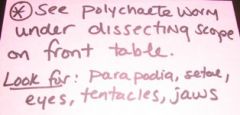
What is the slide, class, phylum, characteristics, body parts, etc?
|
|
|
know for exam...
|
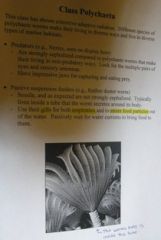
What is the slide, class, phylum, characteristics, body parts, etc?
|
|
|
know for exam...
|
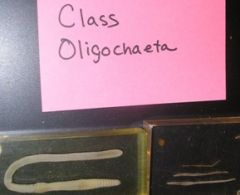
What is the slide, class, phylum, characteristics, body parts, etc?
|
|
|
know for exam...
|
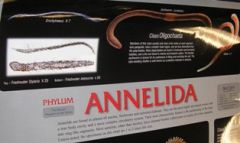
What is the slide, class, phylum, characteristics, body parts, etc?
|
|
|
know for exam
|

What is the slide, class, phylum, characteristics, body parts, etc?
|
|
|
know for exam...
|
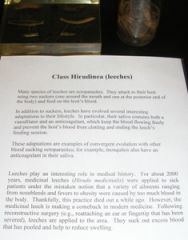
What is the slide, class, phylum, characteristics, body parts, etc?
|
|
|
know for exam...
|

What is the slide, class, phylum, characteristics, body parts, etc?
|
|
|
Identified Segments:
segments 7,8,9 = seminal receptacles segment 14 = opening of oviduct segment 15 = opening of ductus (vas) deferens segments 26, 27 = setae (possibly located in other location) segments 32-37 = clitellum last segment = anus |

What is the slide, class, phylum, characteristics, body parts, etc?
Identify significant segments? |
|
|
Phylum Porifera, types and characteristics:
|
sponges
characteristics: Multicellular, aquatic animals, w/stiff skeletone and bodies perforated by pores Included are: anthozoa, scyphozoa, hydrozoa.. and box jellies Cubozoa |
|
|
Phylum Cnidaria, types and characteristics:
|
corals, hydra, jellyfish
Characteristics: aquatic animals, radially symetric, mouth surrounded by tentacles bearing cnidocytes (stinging cells); body composed of epidermis and gastrodermis, separated by mesoglea |
|
|
Phylum Platyhelminthes, types and characteristics:
|
flatworms
characteristics: elongated, flattened and bilaterally symmetrical; distinct head containing ganglia; nerve cords; protonephridia or flame cells |
|
|
Phylum Mollusca, types and characteristics:
|
clams, snails, squids
characteristics: bilaterally symmetric w/a true coelom, containing a mantle; many have muscular foot and protective shell |
|
|
Phylum Annelida, types and characteristics:
|
segmented worms
Characteristics: body segmented (except leeches); a series of hearts; hydrostatic skeleton and circular and longitudinal muscles |

